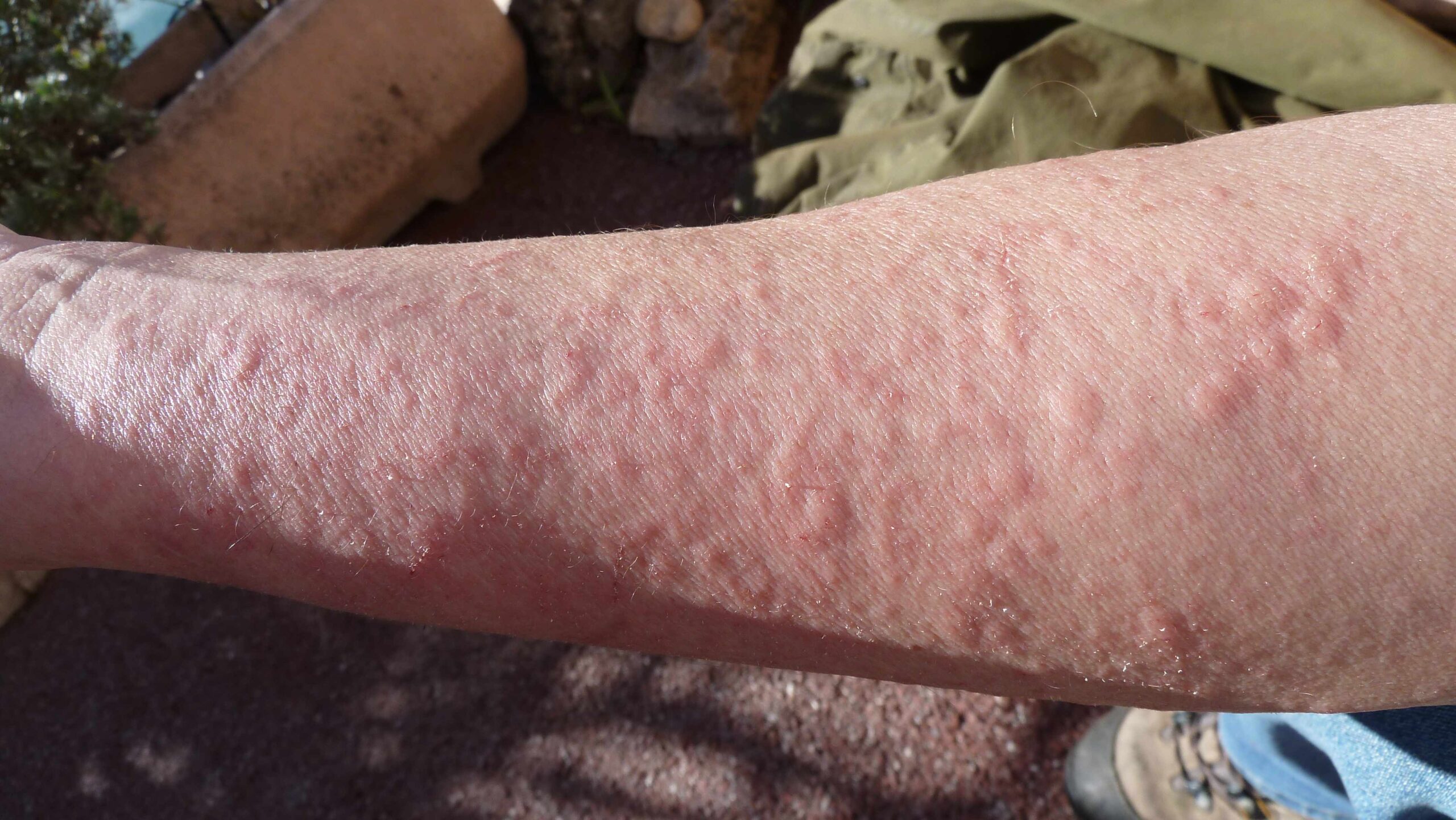Hives are a skin rash that often appears suddenly and causes significant discomfort. These raised, itchy welts on the skin can be indicative of an allergic reaction. Understanding the relationship between hives and allergic reactions helps you identify triggers and seek appropriate treatment.
What Are Hives?
Hives, medically known as urticaria, are raised, red or skin-colored welts that appear on the surface of the skin. They develop when histamine and other chemicals are released from cells in the immune system called mast cells. This release occurs in response to various triggers, including allergens, medications, or physical stimuli.
The condition affects approximately 20% of people at some point in their lives. Hives can appear anywhere on the body and vary significantly in size and shape. They may be as small as a pencil eraser or as large as a dinner plate. Acute cases last less than six weeks, while chronic cases persist for six weeks or longer.
What Do They Look Like?
Hives present as distinct raised areas on the skin that are typically red, pink, or flesh-colored. The welts have well-defined borders and often appear in clusters or patches. They can be round, oval, or irregular in shape.
The affected areas may change location rapidly, disappearing from one area and appearing in another within hours. This characteristic movement distinguishes hives from other skin conditions. The welts often have a pale center with a red border, creating a distinctive appearance. Size varies from small spots to large patches covering significant areas of skin.
What Are Allergic Reactions?
Allergic reactions occur when the immune system overreacts to substances that are usually harmless. These substances, known as allergens, trigger the immune system to release chemicals such as histamine. This process leads to various symptoms throughout the body.
Common allergens include foods such as nuts, shellfish, and eggs, as well as environmental factors like pollen and dust mites, and medications like antibiotics and aspirin. The severity of allergic reactions ranges from mild symptoms to life-threatening anaphylaxis. The immune system’s response to allergens can affect multiple body systems simultaneously. Skin reactions, respiratory symptoms, and gastrointestinal disturbances may all occur during an allergic response.
How Are Hives and Allergies Connected?
Allergic reactions frequently manifest as hives on the skin. When the immune system encounters an allergen, it triggers mast cells to release histamine and other inflammatory compounds. These chemicals cause blood vessels to dilate and become more permeable, resulting in the characteristic swelling and redness associated with hives.
Food allergies are among the most common causes of acute hives. Shellfish, nuts, eggs, and milk are among the foods that frequently trigger these reactions. Environmental allergens, such as pollen, pet dander, and dust mites, can also trigger hives in sensitive individuals.
Non-allergic triggers can also cause hives through similar mechanisms. Heat, cold, pressure, sunlight, and certain medications may trigger histamine release without involving the immune system’s allergic response. Identifying whether your hives are allergy-related helps determine the most effective treatment approach.
Consult a Specialist Today
Understanding the connection between hives and allergies provides the foundation for effective management of these conditions. Proper identification of triggers allows you to take preventive measures and seek appropriate treatment when needed. A qualified allergist can perform comprehensive testing to identify specific allergens causing your hives and develop personalized treatment plans that may include antihistamines, trigger avoidance strategies, or other therapeutic interventions. Contact a healthcare professional if you experience recurring symptoms or if you have any signs of a severe allergic reaction.









Leave a Reply